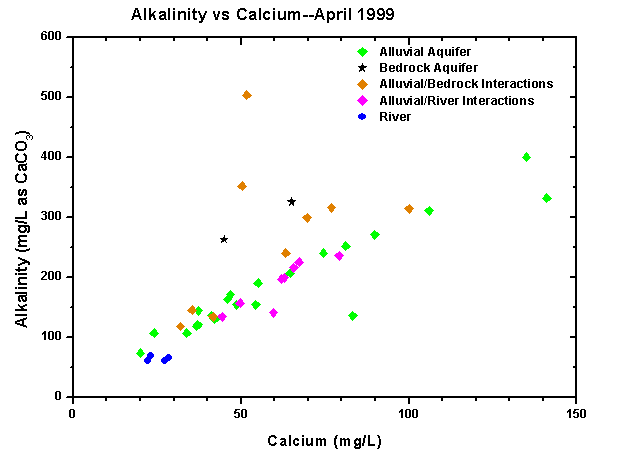Fort Wainwright
Hydrological Data Network
Chemistry Data


Operations of Air-Sparging and Vapor-Extraction systems have to take into account factors such as air permeability, depth to ground-water, soil moisture levels, and temperature conditions. The design of treatment systems should assume some average condition, but ongoing evaluations of systems performance, estimates of impacted zones around extraction wells, and other estimates of system performance need to use actual conditions. Cyclic water tables (seasonal and annual variations) impact the evaluation of system performance and required time to meet operational goals. It is also important to know the range of conditions in temperature and moisture, and how long extremes last. For example, if soils are very wet (saturation level) for a long time, then the potential for aerobic decomposition and changes vapor-sparging system performance is severely limited. The addition of nutrients for enhancing natural-attenuation processes is very dependant on the amount of unsaturated-zone moisture content. If moisture levels are too low, addition of nutrients can create toxic conditions for soil micro-organisms. Low water contents can even be a limiting factor for microbial growth and limit the impact of any nutrient additions.
The following Excel files contain water-quality data for the basic geochemical monitoring network. Each file contains the same data. but is either organized based on all data for a site being listed together, or all data for a sampling event being listed together in table forms.

| Organized by Sampling Dates, 82KB | Organized by Sampling Sites, 150KB |
| Jerry Williams mailto:jwilliams@ensr.com ENSR 3536 International Way; Fairbanks, Alaska 99701; Tel: (907) 452-5700, Fax: (907) 452-1912 |
| Larry D. Hinzman mailto:ffldh@uaf.edu Water and Environmental Research Center; University of Alaska Fairbanks; Fairbanks, Alaska 99775; Tel: (907) 474-7331, Fax: (907) 474-7979 |
Michael R. Lilly mailto:mlilly@arsc.edu Arctic Region Supercomputing Center; University of Alaska Fairbanks; Fairbanks, Alaska 99775; Tel: (907) 479-8891, Fax: (907) 479-8893 |